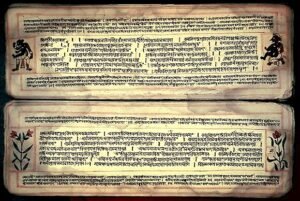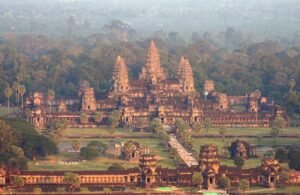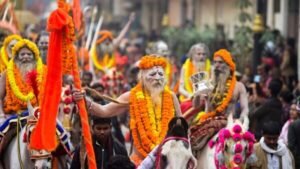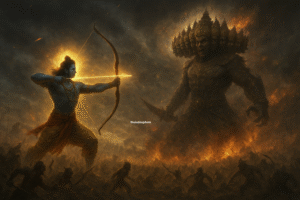
Introduction
Hindu culture is filled with a wealth of traditions and spiritual practices, one of the most profound being Shradh and Pitra Paksha. This sacred observance spans a period of fifteen lunar days, during which Hindus pay homage to their ancestors through rituals and prayers. Rooted in deep reverence for forebears, these practices offer a meaningful way for individuals to connect with their heritage, honor their deceased family members, and seek blessings from their ancestors. In a fast-paced world, Shradh and Pitra Paksha provide an opportunity to pause and reflect on the continuity of life and the enduring bonds between generations.
The Meaning of Shradh and Pitra Paksha
The word “Shradh” originates from the Sanskrit word “Shraddha,” which is composed of two elements: “Srat” (truth) and “Dha” (to hold or support). Thus, Shraddha signifies an offering made with sincerity and devotion. More specifically, it refers to the ritual offering of food to ancestors as an act of love, respect, and gratitude. In Hindu culture, श्रद्धा पूर्वक दिया गया भोजन (food offered with devotion) symbolizes this concept.

Pitra Paksha, on the other hand, combines “Pitra,” meaning ancestors or forefathers, and “Paksha,” meaning fortnight. This two-week period is rooted in the belief that the souls of ancestors temporarily return to the earthly realm to receive offerings and prayers from their descendants. Hindus perform specific rituals during Pitra Paksha to offer sustenance to their ancestors and assist them in their spiritual journey, ensuring peace and well-being for both the living and the dead.
The Significance of Pitra Paksha
Pitra Paksha, also known as Mahalaya Paksha, Kanagat, Jitiya, or Apara Paksha, takes place in the Hindu lunar month of Bhadrapada (typically corresponding to September in the Gregorian calendar). The rituals begin on the first day of the Ashwin month and continue for fifteen days, marking a significant period of reflection, remembrance, and ritual.
The belief in ancestral debt or Pitra Rin is central to this period. Hindus believe they are spiritually indebted to their ancestors, and by performing these rituals, they are repaying this debt, ensuring the ancestors’ peace in the afterlife. The performance of Shradh rites during Pitra Paksha is considered auspicious and important for securing the blessings of the departed.
Rituals and Customs of Pitra Paksha
1. Tarpan (तर्पण)
The ritual of Tarpan involves offering water mixed with sesame seeds (til), barley, and Kusha grass to the ancestors. The offering is made while facing south, the direction associated with Yama, the god of death. During the ceremony, the practitioner pours water from a special utensil, called a tarpan patra, into their cupped hands while chanting mantras that invoke the ancestors by name. This act is believed to quench the thirst of the departed souls and provide them with comfort.
2. Pindadan (पिंडदान)
Pindadan is a more elaborate ceremony, where pindas—rice balls mixed with sesame seeds and barley—are offered to ancestors. These pindas symbolize the physical body of the deceased and are meant to satisfy their hunger in the spiritual realm. Pindadan is typically performed by the eldest son or a male relative, although modern families often involve all members in the ritual. The ritual concludes with the offering of water and mantras, which help guide the soul on its onward journey.
3. Feeding Brahmins and Cows
In addition to offering pindas and tarpan, it is customary to feed Brahmins (priests) and cows during Pitra Paksha. This act of giving sustenance is considered highly virtuous and is thought to accumulate positive karma for both the living and the departed. Feeding cows, which are revered in Hinduism, is also a symbol of purity and nurturing.
4. Charitable Acts and Donations
The Pitra Paksha period is seen as an ideal time for acts of charity. Many Hindus donate food, clothes, or money to the poor and needy during this time. These charitable acts are believed to generate punya (merit) and provide spiritual benefits to both the givers and their ancestors. Such deeds are seen as a way to honor the living memory of the departed by helping others.
The Philosophy Behind Shradh and Pitra Paksha
The practices of Shradh and Pitra Paksha are grounded in Hindu beliefs about the cycle of life, death, and rebirth. Hindus adhere to the idea that the Pinda represents the physical body, and by performing Pindadan, the descendants help provide the soul with the energy required for its spiritual progression and eventual peace.
These rituals also serve to reinforce the connection between the living and the dead. They allow the living to express gratitude, seek forgiveness, and reaffirm their bond with their ancestors. By participating in these ceremonies, Hindus are fulfilling their Pitra Rin—the ancestral debt that binds generations together in the continuum of existence.
Conclusion
Pitra Paksha is a time of solemn reflection, deep gratitude, and meaningful ritual in Hindu culture. It reminds us of the interwoven nature of life and death and the importance of acknowledging the past to move forward into the future. Through the observance of Tarpan and Pindadan, Hindus honor their ancestors, seek their blessings, and ensure their well-being in the afterlife.
In an era where life moves rapidly, traditions like Pitra Paksha serve as a pause for introspection and appreciation of one’s roots. They celebrate the lineage, connections, and spiritual bonds that transcend time and physical existence, linking generations in an enduring chain of respect and devotion.






